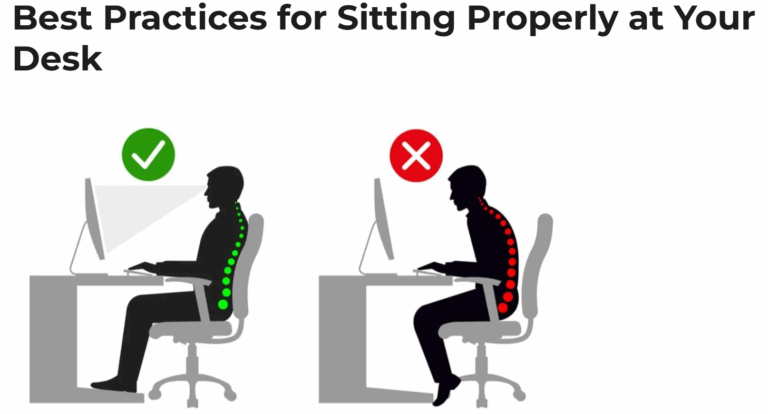The Life-Extending Power of Squats: Why This Simple Exercise Is Your Best Investment in Healthy Aging

Want to add healthy, independent years to your life? Squats for longevity might be the answer—and it doesn’t require a gym membership.
Squats for longevity are more than just a fitness trend—they’re a scientifically proven strategy for extending your lifespan and improving your quality of life as you age. We’ve all heard the phrase “use it or lose it,” but when it comes to muscle mass, this isn’t just a catchy saying—it’s biological reality. The good news? Research shows that incorporating squats for longevity into your routine can combat age-related muscle loss, strengthen your bones, and help you maintain independence well into your later years. Starting around age 30, our bodies begin quietly dismantling the very tissue that keeps us strong, mobile, and metabolically healthy. Without intervention, this natural decline accelerates with each passing decade, setting the stage for frailty, dependence, and diminished quality of life.
But here’s the empowering truth: this trajectory isn’t inevitable. Among all the exercises you could do, squats for longevity stand out as perhaps the most efficient investment in your future self. Let me show you why this fundamental movement pattern deserves a central place in your routine—and how to make it work for you, regardless of your current fitness level.
The Sobering Reality of Muscle Loss and Why Squats for Longevity Matter
Between ages 30 and 60, adults typically lose 3-8% of their muscle mass per decade, with losses accelerating to as much as 15% after age 60. This condition, called sarcopenia, isn’t just about looking less toned—it’s a serious health threat that undermines nearly every system in your body. This is precisely why squats for longevity have become a cornerstone recommendation from fitness and medical professionals alike.
When you lose muscle, you also lose:
- Metabolic flexibility: Muscle tissue burns calories even at rest and helps regulate blood sugar
- Bone density: The mechanical stress from strong muscles keeps bones robust
- Balance and coordination: Weak legs dramatically increase fall risk
- Independence: Simple tasks like climbing stairs or carrying groceries become challenging
Think of your muscles as a savings account for your later years. Every squat is a deposit that pays dividends in mobility, vitality, and autonomy when you need them most.
Why Squats for Longevity Work: The Compound Effect
Unlike isolated exercises that target single muscles, squats for longevity are what fitness professionals call a “compound movement”—they work multiple muscle groups simultaneously while mimicking real-world activities. Here’s what happens when you perform squats:
Muscular engagement: Your quadriceps, hamstrings, glutes, calves, and core all activate in coordination. This full-chain recruitment builds functional strength that translates directly to daily activities.
Bone strengthening: The loading forces transmitted through your legs and spine stimulate bone-building cells, helping prevent osteoporosis—a condition affecting over 200 million people worldwide.
Metabolic boost: Large muscle groups demand significant energy, enhancing insulin sensitivity and helping regulate blood sugar levels naturally.
Balance improvement: Squats for longevity challenge your proprioception (body awareness in space) and stabilizer muscles, reducing fall risk—the leading cause of injury-related deaths in older adults.
Cardiovascular benefits: Research published in the British Journal of Sports Medicine demonstrates that strength training, much like aerobic exercise, may help older adults live longer.
The Science Behind Squats for Longevity: Living Longer and Better
Here’s where things get really interesting. A comprehensive analysis of multiple studies found that people who engage in regular strength training have approximately 15% lower risk of all-cause mortality compared to those who don’t. Squats for longevity aren’t just about adding years—they’re about adding quality to those years.
Maintaining muscle strength after age 50 helps protect against cardiovascular disease, osteoporosis, and neurodegenerative conditions including Alzheimer’s and Parkinson’s disease. The mechanisms behind this protection are fascinating:
- Myokines: When muscles contract, they release signaling molecules that reduce inflammation throughout the body
- Glucose disposal: Muscle tissue acts as a metabolic sink for blood sugar, reducing diabetes risk
- Hormonal balance: Resistance training supports healthy testosterone and growth hormone levels
- Cognitive protection: Physical activity promotes brain-derived neurotrophic factor (BDNF), essential for neural health
Getting Started with Squats for Longevity: Your Practical Protocol
The beauty of squats for longevity is their scalability. Whether you’re 35 or 75, recovering from injury or in peak condition, there’s a squat variation that meets you where you are.
Squats for Longevity: Beginner Level
Sit-to-stand squats: Use a sturdy chair. Start seated, lean forward slightly, and stand up without using your hands. Lower back down with control. This teaches proper mechanics safely.
Wall squats: Stand with your back against a wall, feet shoulder-width apart. Slide down until your thighs are parallel to the floor (or as low as comfortable), hold for 10-30 seconds, then slide back up.
Squats for Longevity: Intermediate Level
Bodyweight squats: Stand with feet hip to shoulder-width apart, toes slightly turned out. Push your hips back as if sitting in a chair, keeping your chest up and weight in your heels. Lower until your thighs are roughly parallel to the floor, then drive through your heels to stand.
Goblet squats: Hold a light dumbbell or kettlebell at chest height. This adds resistance while the front-loaded weight helps you maintain proper posture.
Squats for Longevity: Advanced Level
Bulgarian split squats: Elevate your rear foot on a bench. This unilateral (single-leg) variation challenges balance and addresses strength imbalances.
Pistol squats: The one-legged squat is an advanced movement requiring significant strength, balance, and mobility.
Your Weekly Framework for Squats for Longevity
Starting strength training in childhood or youth builds a musculoskeletal foundation that protects throughout life, but beginning squats for longevity later still offers significant benefits.
For sustainable results, aim for:
- Frequency: 2-3 sessions per week with at least one day of rest between
- Volume: Start with 2-3 sets of 8-12 repetitions
- Progression: Increase difficulty every 2-3 weeks by adding reps, sets, or resistance
- Recovery: Adequate protein intake (1.6-2.2g per kg body weight) and 7-9 hours of sleep support muscle repair
Proper Form for Squats for Longevity: Protecting Your Joints While Building Strength
Poor technique not only reduces the effectiveness of squats for longevity but increases injury risk. Follow these cues:
- Knee tracking: Your knees should track in line with your toes—not caving inward
- Neutral spine: Maintain the natural curve in your lower back; avoid excessive rounding or arching
- Depth: Lower as far as you can while maintaining form; forcing depth compromises safety
- Breathing: Inhale as you descend, exhale as you rise
- Tempo: Control the descent (2-3 seconds down), pause briefly at the bottom, then rise powerfully
If you’re unsure about your form, a single session with a qualified personal trainer or physical therapist can provide invaluable feedback.
Beyond Squats for Longevity: The Bigger Picture of Healthy Aging
While squats for longevity are remarkably effective, they’re most powerful as part of a comprehensive approach to healthy aging. Consider integrating:
Other resistance exercises: Push-ups, rows, hinges (like deadlifts), and overhead presses ensure balanced development.
Cardiovascular activity: Walking, cycling, swimming, or dancing for heart health and endurance. The American Heart Association recommends at least 150 minutes of moderate-intensity aerobic activity weekly.
Flexibility and mobility work: Yoga, tai chi, or dedicated stretching maintains range of motion.
Balance training: Standing on one leg, heel-to-toe walking, or balance board exercises prevent falls.
Nutritional support: Adequate protein, calcium, vitamin D, and omega-3 fatty acids support muscle and bone health.
Social connection: Group fitness classes or workout partners provide accountability and combat isolation, a significant health risk in older adults.
The Mental Benefits of Squats for Longevity: Confidence and Independence
There’s something profound that happens when you feel physically capable. The goal of squats for longevity extends beyond merely lengthening lifespan to enhancing quality of life, equipping the body to handle daily tasks, maintain independence, and reduce injury or chronic disease risk.
I’ve watched countless older adults rediscover confidence through strength training and squats for longevity programs. The woman who can now lift her grandchild without back pain. The man who resumed hiking after years of avoiding it. The 70-year-old who travels independently because she trusts her body to handle airport navigation and luggage.
These aren’t just physical victories—they’re psychological ones. When you’re strong, you’re less fearful. You take more risks (the good kind). You remain engaged with life rather than withdrawing from it.
Common Concerns About Squats for Longevity Addressed
“I’m too old to start squats for longevity.” No research supports an upper age limit for beginning strength training. Studies show benefits even in people beginning in their 80s and 90s. Start gently and progress gradually.
“I have knee/hip/back pain.” Many joint issues actually improve with proper strengthening of surrounding muscles. Consult a physical therapist who can modify squats for longevity exercises for your specific situation.
“I don’t have time.” A meaningful squat session takes 10-15 minutes. You have time—it’s about priorities.
“I’m afraid of getting injured.” Starting with bodyweight exercises and focusing on proper form minimizes risk significantly. Injury rates in supervised strength training are remarkably low.
Your Action Plan: Starting Squats for Longevity This Week
Don’t wait for the perfect moment or perfect program. Begin your squats for longevity journey simply:
Day 1: Perform 10 sit-to-stand squats from a chair, three times throughout the day. Notice how it feels.
Days 2-3: Rest, but stay active with walking or gentle stretching.
Day 4: Increase to 12 repetitions, still using the chair for support.
Week 2: Progress to bodyweight squats if the chair version feels easy, or continue building repetitions.
Week 3-4: Add a second set with 60-90 seconds rest between sets.
Track your squats for longevity progress in a simple notebook or phone app. Small, consistent steps compound into remarkable transformations.
The Bottom Line on Squats for Longevity
Integrating squats for longevity into a regular fitness routine helps ensure later years are not only longer but healthier and more fulfilling. This isn’t about vanity or athletic achievement—it’s about maintaining the physical capacity to live the life you want for as long as possible.
Every squat is an act of self-respect, an investment in your future autonomy. The body you build today determines the life you’ll live tomorrow. And unlike many aspects of aging we can’t control, squats for longevity are largely within your power.
So stand up. Sit down. Repeat. Your 80-year-old self will thank you for starting your squats for longevity practice today.
Before beginning any new exercise program, especially if you have existing health conditions or haven’t been active recently, consult with your healthcare provider. This article provides general information and shouldn’t replace personalized medical advice.




